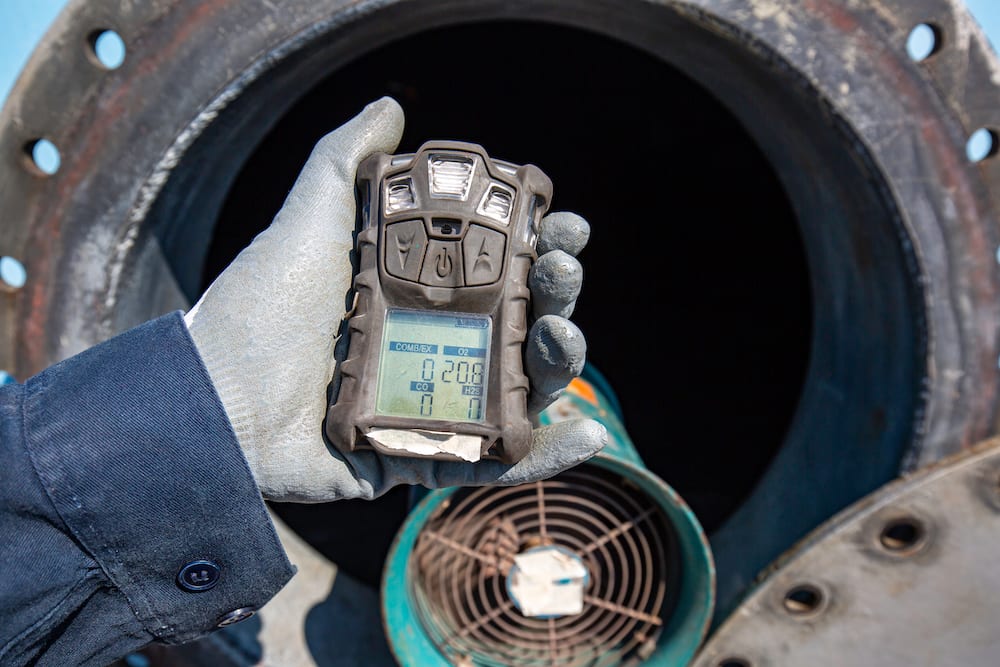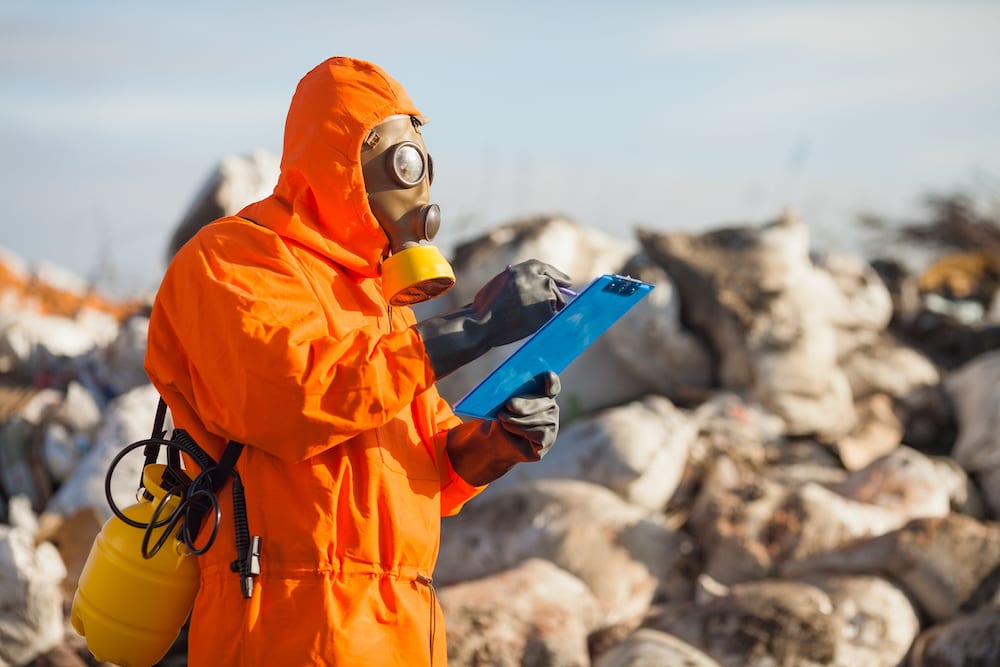- Published 25 Mar 2024
- Last Modified 25 Mar 2024
- 8 min
Advancing Miner Safety with Air Quality Monitors
Explore how air quality monitors and personal protective equipment enhance miner safety. Ensure compliance and productivity with solutions from RS.

Just like the proverbial canary in the coal mine, which miners historically used as a natural alarm system to warn of toxic gases, today's air quality monitors serve as critical tools in safeguarding the health and safety of workers in the Australian mining industry. This analogy underscores the importance of air quality, as the canary's well-being was an early indicator of poor air quality, alerting miners to evacuate before gases like methane or carbon monoxide reach harmful levels. In the modern context, air quality monitors fulfil this role by detecting hazardous conditions that can arise from the unique challenges of mining operations. These challenges include confined spaces that can trap gases, dust generation from drilling and excavation, and the emission of harmful gases. Such conditions make the continuous testing and measuring of air quality an essential aspect of miner safety.
The mining industry's air quality is compromised by a mix of pollutants, including particulate matter from disturbed earth and machinery, and gases such as carbon dioxide and methane, which can lead to toxic exposure and explosion risks. Furthermore, volatile organic compounds and nitrogen oxides contribute to the complexity of maintaining a safe working environment, each requiring specific detection and management strategies. This complex mix of air quality challenges in mining operations requires a detailed approach to air quality measurement, emphasising the critical role of air quality monitors in identifying potential hazards and enabling timely action to mitigate risks.
Understanding the pivotal role these monitors play in mirroring the canary's warning, it becomes evident how essential they are in the modern mining environment. They ensure compliance with safety regulations and support the implementation of proactive safety measures, significantly reducing the risk of health issues and enhancing the overall productivity of mining operations.

The Importance of Air Quality Analysis
The importance of vigilantly testing for gases such as carbon dioxide, methane, and carbon monoxide, cannot be overstated in the mining environment. These gases, if not properly managed, can create conditions that are not only harmful but potentially fatal for miners. Thus, the implementation of robust monitoring systems is pivotal, playing a crucial role in ensuring the safety and well-being of mining personnel.
Carbon dioxide, a common byproduct of mining operations, can accumulate in confined spaces, reducing oxygen levels and posing a risk of asphyxiation. Methane, particularly prevalent in coal mines, presents a dual hazard: at lower concentrations, it can significantly decrease oxygen availability, leading to suffocation; at higher levels, it becomes explosively dangerous.
However, it's the presence of carbon monoxide that often poses the most insidious risk. Produced through the incomplete combustion of carbon-containing materials, such as the operation of diesel engines and blasting activities, carbon monoxide is both odourless and colourless, making it a stealthy threat. Its ability to bind with haemoglobin more effectively than oxygen leads to carbon monoxide poisoning, a condition that can manifest as headaches, dizziness, and, in severe cases, unconsciousness or death.
The deployment of sensitive and accurate air quality monitors capable of detecting and measuring these gases is essential. These devices offer real-time insights, enabling swift actions to mitigate the risks associated with gas accumulation. Beyond detection, these monitors are integral to crafting comprehensive safety strategies, incorporating ventilation improvements and emergency response protocols. By continuously assessing air quality, deviations from safe gas levels are promptly addressed, ensuring the miners’ health and preventing potential disasters.
Detecting and Managing Particulate Matter
Navigating the complexities of mining environments reveals the critical challenge of particulate matter in compromising air quality. These tiny particles, originating from soil and rock disturbance, machinery exhaust, and processing activities, can also affect miners' health and operational safety. The diversity in particle size further complicates the issue, as smaller particles can penetrate deeper into the respiratory system, causing more severe health problems.
Air quality monitors are pivotal in detecting and managing particulate matter within mining operations. These sophisticated devices are designed to identify various particle sizes, from larger, visible dust particles to fine particulates that can easily be inhaled into the lungs. By continuously analysing air samples, these monitors provide essential data that can inform immediate and long-term strategies to mitigate the impact of particulate matter.
The ability of air quality monitors to differentiate between particle sizes is crucial for implementing effective control measures. For instance, larger particles might be controlled through water sprays to suppress dust, while finer particles may require more advanced filtration systems to remove them from the air. This tailored approach ensures that mitigation efforts are efficient and effective, directly targeting the most harmful particulates.
Moreover, the data gathered by these monitors supports the development of health and safety protocols, including the determination of safe work practices and the need for personal protective equipment (PPE). By providing a clear picture of the particulate matter levels within a mining operation, these systems enable proactive air quality management, ensuring a healthier environment for miners.
Effective particulate matter management is not just about immediate responses; it also involves long-term strategies to reduce the generation of dust and fine particles at the source. This might include altering work practices, implementing dust suppression technologies, and enhancing ventilation systems. Through such comprehensive management, mining operations can significantly improve air quality, reducing the risk of respiratory problems and other health issues among miners.
Additional Pollutants: Monitoring and Mitigation

Best Practices for Implementing Air Quality Monitors in Mining
Deploying air quality monitors in mining operations is crucial for maintaining a safe working environment. Effective implementation involves placing monitors strategically to capture comprehensive data on air quality across different areas of the operation, especially near emission sources and in worker common areas. Regular monitoring is essential, with the frequency adjusted based on the level of activity and potential risk factors in each location. When poor air quality is detected, it's vital to respond quickly, not just to address the immediate problem but also to investigate and remedy the underlying causes.
Despite the effectiveness of air quality monitoring, there are limitations to what technology can achieve, particularly in the unpredictable environment of mining. This brings to light the importance of PPE as an additional safeguard. Respiratory protection, for instance, becomes indispensable when miners are exposed to hazardous substances not fully mitigated by air quality controls. PPE acts as a critical line of defence, protecting miners from inhaling dangerous particulates and gases.
For those seeking more in-depth information on protective measures, including the selection and use of respiratory protection in mining environments, the blog Complete Guide on Essential Mining PPE for Health and Safety serves as a valuable resource. It provides detailed insights into choosing the right PPE, underscoring its significance in complementing air quality monitoring efforts to ensure comprehensive miner safety.
With an understanding of both the critical role of air quality monitors and the indispensable nature of PPE in mining operations, it becomes clear how these elements work together to maintain high safety standards. As we conclude this discussion, it's evident that maintaining optimal air quality is not just about technology but also involves a holistic approach to worker safety, where monitoring and protective equipment play complementary roles.
Achieve Optimal Air Quality and Safety in Mining with RS
As the Australian mining industry navigates the path towards enhancing safety and productivity, the importance of robust air quality management and the use of PPE cannot be overstated. With over 70 years of experience supporting mining operations in Australia and globally, RS has cultivated a profound understanding of the sector's unique safety challenges and requirements.
At RS, we are dedicated to aid mining companies in their mission to maintain the highest standards of air quality and worker safety. Our commitment is reflected in our extensive selection of air quality monitors and PPE, designed to meet the rigorous demands of the mining environment. These solutions not only help in managing the immediate risks associated with air pollutants and particulate matter but also support long-term health and operational efficiency.
By partnering with RS, mining operators gain access to reliable, high-quality equipment solutions that are essential for achieving a safe, productive work environment. Our expertise and comprehensive product range empower you to meet and exceed safety standards, ensuring the well-being of your workforce while maintaining operational excellence.
We invite you to explore our solutions for the mining sector and contact us to discuss how we can assist you in achieving your environmental, safety, and productivity goals. Together, let's work towards a safer and more sustainable future for Australia's mining industry. Join the many mining operations that have already benefited from RS's support and expertise.
Popular Air Quality Monitor Brands
Related links
- 7 Factors to Consider When Choosing Air Quality Monitors
- Air Quality Monitors
- Breathing Easy: The Essential Guide to Air Quality and Humidity...
- The Role of HVAC Systems in Mining Air Quality & Humidity
- Complete Guide on Essential Mining PPE for Health and Safety
- Achieving Environmental Management in Sustainable Mining
- Mining Industry Solutions: Personal Protective Equipment (PPE) for Mining
- PPE: A Complete Guide